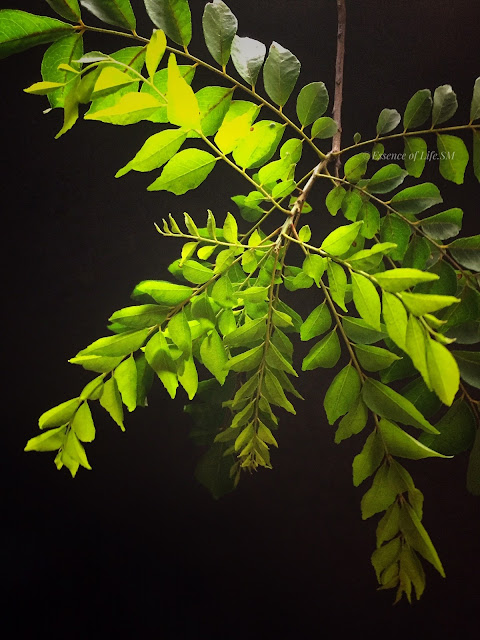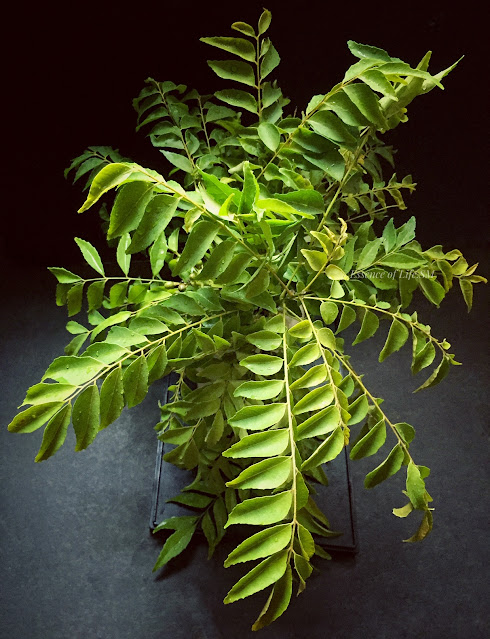 |
| AMARANTH LEAVES |
When it comes to Greens it is commonly termed as Spinach. Spinach is rather a different green when seeking deep into what Amaranth Leaves are, I would like to call it - Asian Spinach. Universally known as Amaranth Leaves, locally called as Bayam in Malaysia, Singapore & Indonesia. It is called as Thandu (Stalk) Keerai/Cheera(Green) in Tamil & Malayalam. And this is one ancient or first plant variety ever to be domesticated and grown for personal use. It has travelled a long way since civilizations to the present era.
An easy to grow Green variety, which is available in shades of green, red, purple and with a combination of pink and green. We can get them at a very cheap cost in the market and the farmer's market is always loaded with bunches of fresh and luscious locally grown greens. But growing these Greens in your backyard is another technique which can cater you with fresh leaves at your service, whenever needed. It is more than enough that you buy the seeds once, they shoot up and grow into matured plants, flower up and give you a new batch of black coloured tiny seeds, which you can sow it again and again for fresh produce. both the leaves and seeds of Amaranth are edible. The seeds, like that of quinoa, are high in protein and taste similar to true grains grown from grass seeds.
Amaranth Leaves are popular around the world for its rich and nutritious values. The most common green consumed in Asian countries is rich in Proteins, Vitamins and minerals like Iron, Calcium & Phosphorus. The Red Variety of this green is more flavourful & nutritious compared to the Green variety and exudes a blood-red juice when cooked.
Slightly astringent when raw, the greens turn soft and mellow as they cook down. Amaranth greens need no embellishments, they taste great as such. A note of seasonings adds extra flavour& taste to the dish. Along with the leaves, thinner stalks of the plant can also be eaten. Most similar in taste to spinach, amaranth greens have a deep flavour and a hearty yet tender texture that makes it ideal for use in stir-fries and sautés.
AMARANTH LEAVES ARE POWER HOUSES OF NUTRIENTS :
- These leaves are power-packed with essential phytonutrients and antioxidants.
- It has no traces of fat and has no cholesterol.
- Amaranth Leaves are a rich source of Fiber.
- These Leaves are loaded with Iron & Potassium.
- It is rich in Vitamin C, A, B & K.
- Amaranth Leaves have Lysine, an essential amino acid that is needed for energy production and absorption of calcium.
- Amaranth leaves are rich in Calcium
- Amaranth leaves and grain are rich in Protein.
HEALTH BENEFITS OF AMARANTH LEAVES :
- The phytonutrients and antioxidants which help to reduce inflammation in the body and provide an extra boost of nutrition.
- Eating Fiber rich food helps us to reduce our weight
- Also, it prevents heart disease as it lowers the cholesterol in the blood.
- Including Amaranth Leaves in our daily diet helps to reduce weight.& also helps reduce high blood pressure.
- Amaranth Leaves are loaded with Iron, which helps in producing red blood cells and is also needed for cellular metabolism.
- It also helps treat anaemia.
- Vitamin C in the Leaves helps us to fight against infections and also heals the wounds.
- It also helps reduce the effect of free radicals, thus preventing the growth of Cancer cells.
- They are full of flavonoid Polyphenolic antioxidants like Beta-carotene, Zeaxanthin, and Lutein.
- Vitamin A in Amaranth Leaves benefits healthy skin and proper vision.
- Vitamin A also offers protection against lung and mouth cancers.
- Amaranth Leaves have the highest quantity of Vitamin K & Calcium which is needed for good bone health and also strengthens the bone mass.
- It is beneficial for those who suffer from Alzheimer’s disease as it controls the neural damage done in the brain.
- Amaranth Leaves are loaded with Vitamins of the Group B - Folates, Riboflavin, Niacin, Thiamin, Vitamin B6.
- This help prevents birth defects in newborn babies.
- It is also needed for optimal mental and physical health.
- Amaranth leaves have Lysine, an essential amino acid that is needed for energy production and absorption of calcium.
- Lysine also promotes hair growth and good skin.
- Amaranth leaves are helpful in treating diarrhoea and haemorrhages.
- Regular consumption of these leaves benefits digestion.
HOW TO BUY AMARANTH LEAVES?
- Look for relatively young bunches of the plant that don't display any budding flowers, flowering indicates that the plant is already too mature.
- Look for bright coloured leaves without any signs of browning or wilting.
CULINARY USES OF AMARANTH LEAVES :
Amaranth Leaves are widely used in Indian cooking. In the north, it is locally known as CHAULAI or SAAG. In Tamil, it is called as Thandu Keerai/Siru Keerai/Mulai Keerai, and as Thandu Cheera/Mullan Cheers in Malayalam, Thotakura in Telugu & Dhantinasoppu in Kannada.FEW RECIPES PREPARED WITH AMARANTH LEAVES
|
|
|
|
- A quick stir fry called Chaulai Saag is prepared by cooking the leaves with Onions, garlic and spices.
- In Tamilnadu, the simple stir fry is prepared in the name of Keerai Poriyal and in Kerala, it is called as Cheera Thoran. What differs with recipes are the seasonings & the type of oil used for cooking the dish.
- We can find a wide range of stir-fries prepared with these leaves in South East Asian cuisines too.
- Bayam Goreng is one such dish popular in Malaysia, where these leaves are called 'Bayam'.
- Another popular dish called Dhal Saag, where the leaves are cooked with the lentils like Tuvar Dhal/Moong Dhal is prevalent in North India.
- The same dish has different names as Keerai Paruppu in Tamil, Cheerayum Paruppum in Malayalam & Thotakura Pappu in Telugu.
- A typical Tamilnadu(Kongu) styleKeerai Masiyal/ Kadanja Keerai/Mashed Greens can also be prepared with tender Amaranth Leaves.
- We can also prepare Chutneys and Thogayals with these leaves.
- Curries such as Keerai /Cheera Curry, colloquially called Keerai Molagoottal prepared with lentils and ground coconut can also be prepared with these greens.
- Mor Keerai a common curry prepared with Curd/Yogurt and Greens can also be cooked using these Amaranth Leaves.
- Keera Vadai a popular South Indian fritter can also be prepared by adding these greens along with Lentils and spices.
Top your sandwiches with these leaves for a little crunch and flavour. - Can add them in Soups too.
_______________________________________________________________________________________________
DISCLAIMER:
Please remember these treatments options are only meant as guidelines and in no way replaces the advice or treatment provided by your medical practitioner. It is always good to seek the advice of your physician, homeopath, naturopath, or herbalist for professional advice in any matter related to your health. This article is for information purposes only.

















